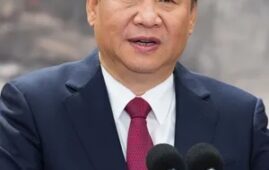



China aims to address the weaknesses exposed in medical personnel’s knowledge and skills amid combating the COVID-19 epidemic by expanding the scale of rural-area tuition-free medical students and promoting the cultivation of interdisciplinary innovative top medical talents.
The General Office of the State Council issued instructions to accelerate the innovative development of medical education on Wednesday, suggesting that China’s resolution should comprehensively improve the quality of medical personnel training and develop medical education and health services.
China’s medical workers have played an important role in the prevention and control of the COVID-19 epidemic. However, as the country faces the new challenges in addressing the coronavirus and new requirements posed by the development of medical science, China’s medical education system has problems in terms of the structure of personnel training and quality of talents.
To tackle these problems, the instructions proposed 17 reform measures in four aspects including gradually expanding the recruitment of tuition-free medical students in rural areas, a project initiated in 2010 involving training more general practitioners for county- and town-level medical and health institutions, and making traditional Chinese medicine (TCM) courses compulsory for clinical medicine education.
The instructions attempt to comprehensively optimize the structure of medical personnel training by strengthening the discipline construction of medical majors and promoting talent training and the development of urgently needed majors, such as anesthesia, infection, critical care medicine and pediatrics.
What’s more, China will increase its financial support for medical colleges and universities and the standards of fixed allocations for medical students will be adjusted in a timely manner.
Source: Global Times


Cooperation between China and Nigeria had.



Nigerian government has urged trainees of.



Minister of State for Foreign Affairs,.


The Nigerian Government has congratulated the.


The Humanitarian Service Diamond Awards has.
A Chinese Company, Inner Galaxy Steel.


The Programme Coordinator, Regulatory, Compliance and.


A Non-Governmental Organization (NGO), Committee for.
The Trustfund Pensions Limited has chided.


The House of Representatives Committee on.
Leave a Comment